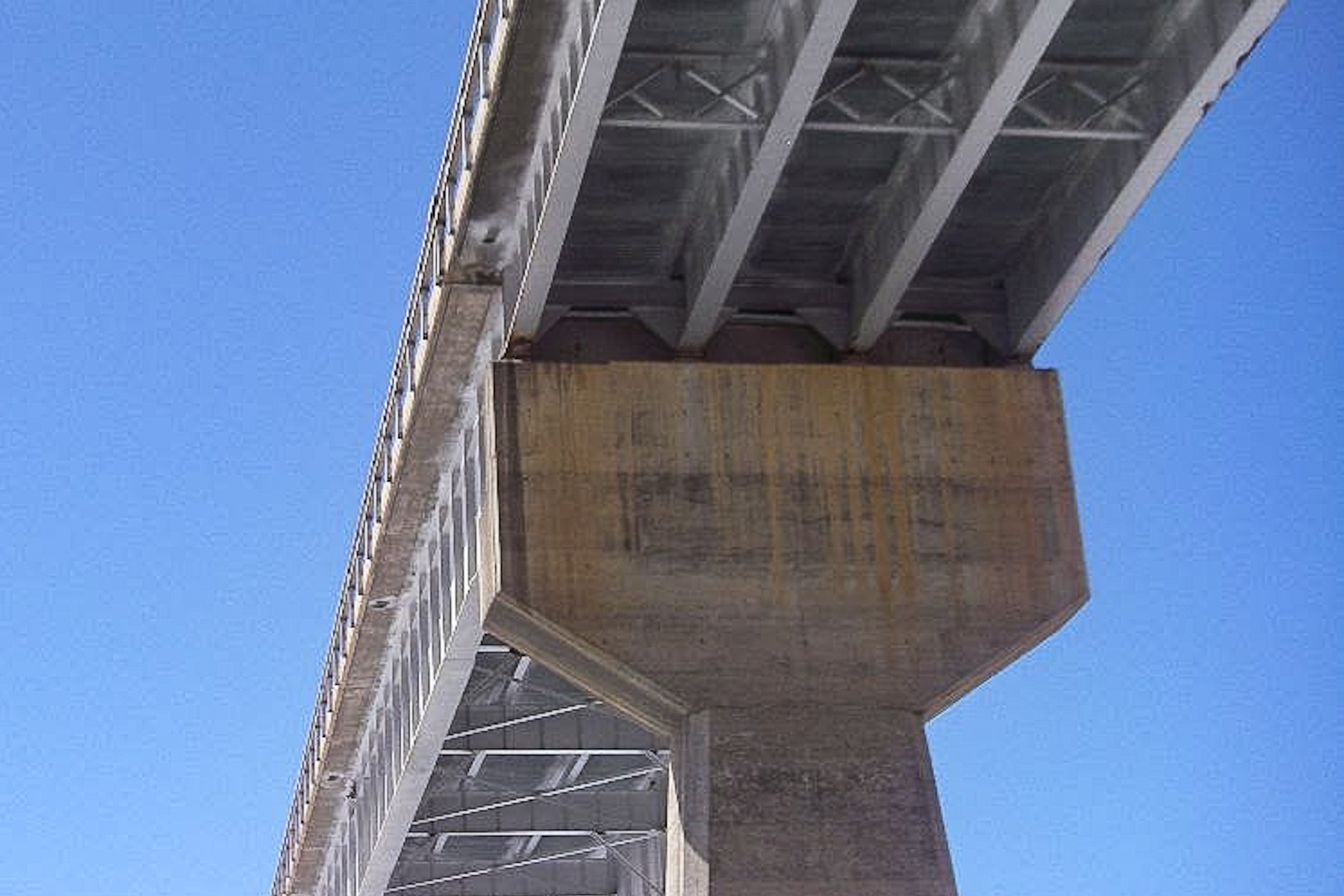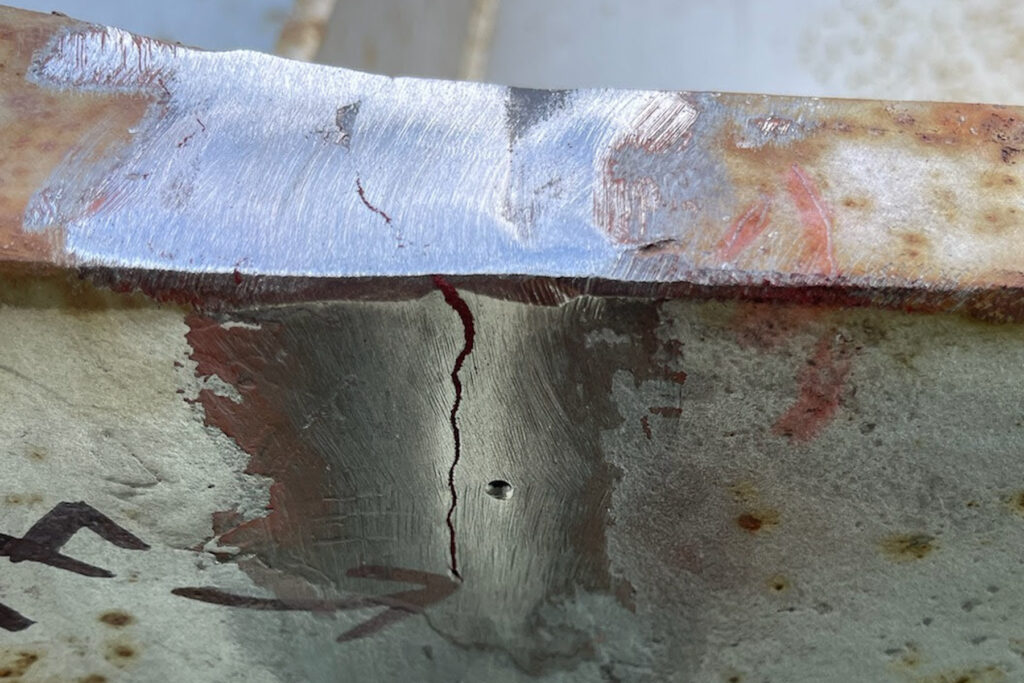
Engineers working to reopen a cracked bridge over Blue Mesa Reservoir are drafting repair strategies that could take weeks or months, depending on the extent of the damage.
Jason Proskovec, a project manager with Kiewit Infrastructure Co. for Colorado, said the work could range from some additional steel plating all the way to a complete replacement of the superstructure. However, Proskovec said that outcome seems unlikely.
“I think right now it’s low probability, but it’s still a possibility,” Proskovec told an audience in Gunnison on Tuesday. The update was scheduled by Colorado Department of Transportation and Gunnison County officials to update residents on the closure, which is nearing its third week. The bridge was closed when a crack in the steel was discovered during a routine inspection.
The more hopeful scenarios involve bolstering the bridge with additional steel plating that could range from 12 tons of new steel plating along the bottom of the structure, to a more robust 88-ton requirement all the way up to 320 tons of additional steel plating to brace the bridge on both sides of the horizontal structure, a solution Proskovec called “global plating.”
“This isn't normal steel, it has to be fracture-critical steel that's fabricated. There's some additional testing that we have to do before we fabricate those steel members. That is happening right now,” Proskovec said. “We have the first 88 tons that we've located. We'll be ready to start fabrication as soon as we understand what the design is.”
Part of the reason the extent of repairs is not yet known is because the inspection of the bridge is a slow-moving, detailed process, said Jason Smith, Region 3 transportation director for CDOT in Grand Junction. One that’s also been hampered by windy, stormy weather in Colorado this week.
Smith said there are 118 locations on the bridge that require inspection, a process that involves removing all the paint from the bridge, scanned with an ultrasonic testing machine and analyzed by specialists to determine if there’s an “anomaly” in the location.
“Out of all these scans that we've done, we've had 40, that's been scanned out of those 118 locations. We have found 25 anomalies,” Smith said.

How bad an anomaly is then rated on a different scale. Smith also explained that one reason the crews can’t simply weld problem areas is that the steel in question is high strength material — three times as strong as normal steel, Smith said — and therefore difficult to weld. The bridge was also originally manufactured in a controlled environment and those welds could not be achieved with the bridge in place, under tension over the state’s largest reservoir.
“We can’t control those conditions out in the field. That’s why we’re not looking at a welding repair,” Smith said.
The range of options could mean weeks or months of repairs, according to Proskovec. The “local plating” option, which would add about 12 tons of steel plates to the structure, could be done in four-to-six weeks. A more robust repair requiring 88 tons of steel would be two to three months, and the global plating option demanding 320 tons of steel would be four to five months.
“Obviously our goal would be no later than Halloween around here to make sure we beat the weather,” Proskovec said.
If a total replacement of the superstructure is needed, Proskovec said they would likely do a temporary repair of the existing bridge to allow for one-lane travel and prepare for a full replacement next spring that could be done in 12 to 16 weeks. That’s if everything was procured and ready to go.
Smith added that CDOT is working on ways to accelerate those timelines, once they find out which option is needed.
In the meantime, the detour route on County Road 26 is expected to open to larger trucks on Thursday. Previously traffic was restricted to vehicles below 16,000 pounds.









